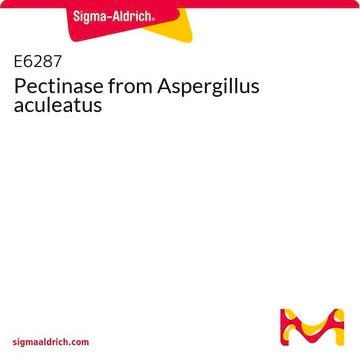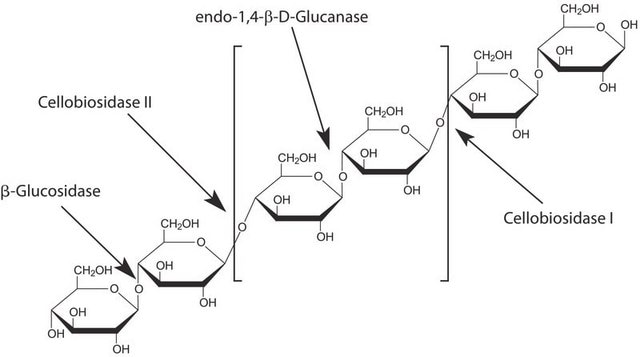P2401
Pectinase from Rhizopus sp.
powder, 400-800 units/g solid
Sinônimo(s):
Macerozyme R-10, Poly-(1,4-α-D-galacturonide) glycanohydrolase, Polygalacturonase
Selecione um tamanho
Selecione um tamanho
About This Item
Produtos recomendados
Formulário
powder
Nível de qualidade
atividade específica
400-800 units/g solid
características do produto alternativo mais ecológico
Waste Prevention
Design for Energy Efficiency
Learn more about the Principles of Green Chemistry.
sustainability
Greener Alternative Product
categoria alternativa mais ecológica
, Enabling
temperatura de armazenamento
−20°C
Procurando produtos similares? Visita Guia de comparação de produtos
Descrição geral
Pectinase, also known as pectinolytic enzyme, is predominantly found in bacteria, fungi and plants.[1] Polygalacturonase is one of the highly abundant enzymes among all the pectinolytic enzymes.[1] Pectinase has a wide range of industrial applications including, fruit juice extraction and its clarification.[1][2] In addition, it is also used in vegetable oil extraction, tea and coffee fermentations, bleaching of paper, in poultry feed additives and in alcoholic beverages and food industries.[1]
Aplicação
Ações bioquímicas/fisiológicas
Definição da unidade
Outras notas
Palavra indicadora
Danger
Frases de perigo
Declarações de precaução
Classificações de perigo
Resp. Sens. 1
Código de classe de armazenamento
11 - Combustible Solids
Classe de risco de água (WGK)
WGK 3
Ponto de fulgor (°F)
Not applicable
Ponto de fulgor (°C)
Not applicable
Equipamento de proteção individual
Eyeshields, Gloves, type N95 (US)
Escolha uma das versões mais recentes:
Já possui este produto?
Encontre a documentação dos produtos que você adquiriu recentemente na biblioteca de documentos.
Os clientes também visualizaram
Protocolos
To measure pectinase activity, a titrimetric stop reaction assay is used. One unit of pectinase will liberate 1 μmol of galacturonic acid from poly-galacturonic acid per hour at pH 4.0 at 25 °C.
Active Filters
Nossa equipe de cientistas tem experiência em todas as áreas de pesquisa, incluindo Life Sciences, ciência de materiais, síntese química, cromatografia, química analítica e muitas outras.
Entre em contato com a assistência técnica











